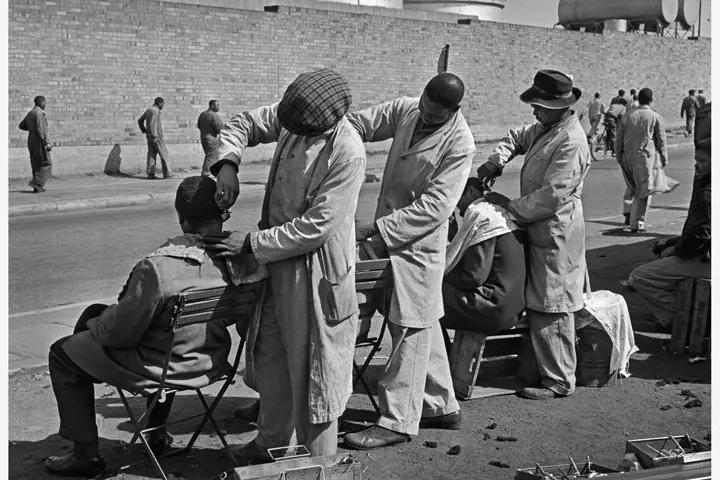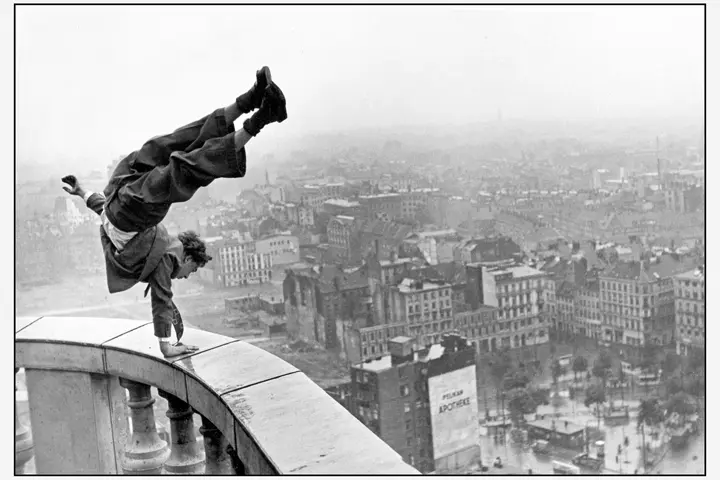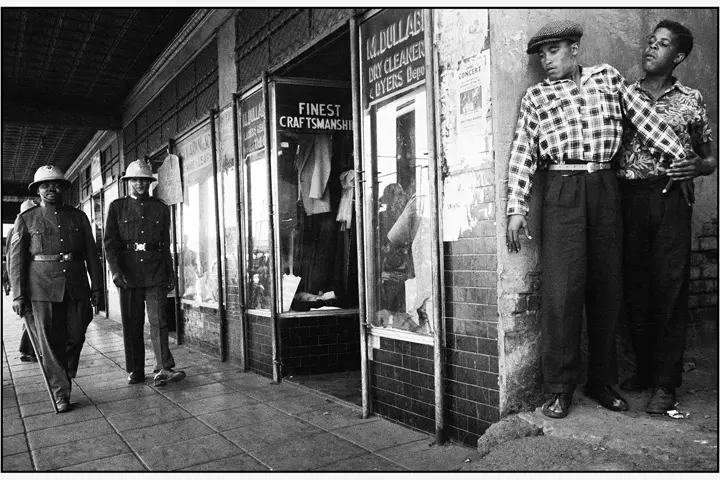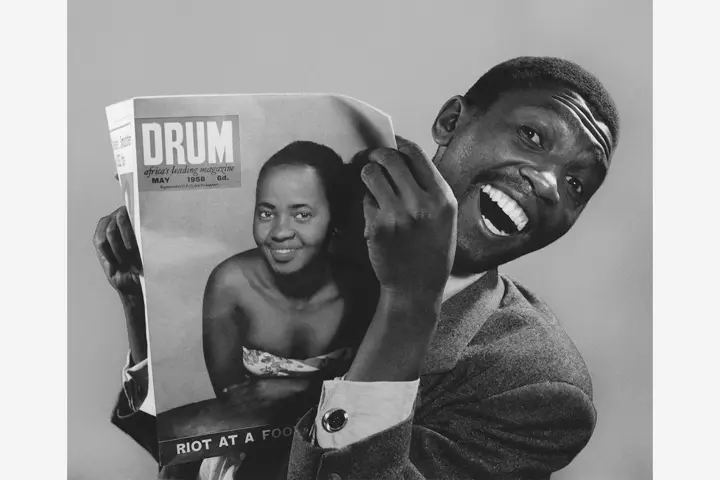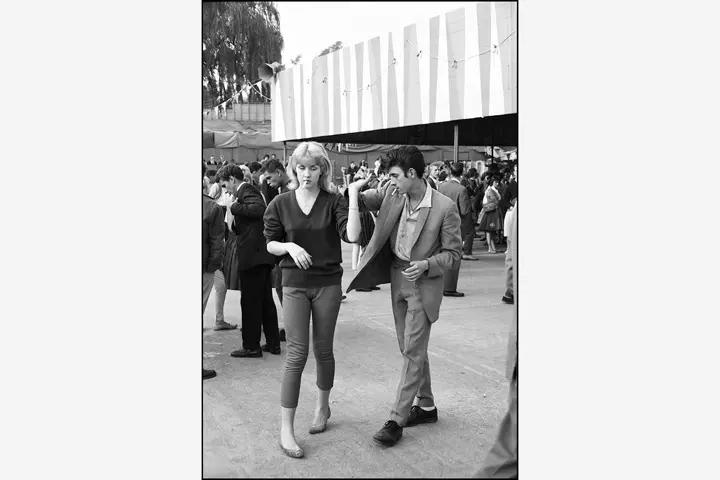Whether the image of Miriam Makeba singing, or the picture of Nelson Mandela looking through the bars of his former prison, Jürgen Schadeberg has taken numerous photographs in South Africa that are today considered legendary and iconic. As a photojournalist and representative of Life Photography, he is a humanist in the best sense of the word, a person who has an unprejudiced interest in the daily life and living conditions of his fellow human beings. His approach to those he portrays is always sympathetic and respectful, regardless of their nationality or the colour of their skin.
Born and brought up in Berlin, Schadeberg left Germany in 1950 with little more than a suitcase in his hand: it did, however, include his inexpensively purchased Leica IIIa, which allowed him to immediately establish himself in South Africa as a photojournalist. Influenced by experiences of racism in Europe, he found South Africa deeply divided, with the country’s black majority being violently oppressed by the white minority.
Impartial, passionate and curious, these qualities allowed Schadeberg time and again to photograph places and situations, which would have been unimaginable for most of his white contemporaries. It was primarily his work for the magazine Drum, that ensured that he was to become a chronicler of an era.
In 1964, Schadeberg was forced to leave South Africa, and spent the following decades working as a free-lance photographer in Europe and the USA. Here too he remained faithful to an empathetic approach to his work. It was not until 1985 that he returned to Johannesburg, where he produced the second chapter of his South African photographic journey, that ran until 2007.
Leica is now honouring Schadeberg with the Leica Hall of Fame Award in acknowledgment of his body of over seven decades of work, and his untiring, courageous and outstanding commitment as a photographer.
Jürgen Schadeberg was born in Berlin in 1931, where he attended the School for Optic and Photo Technology as of 1946: from there he went on to work for the Deutsche Presseagentur (dpa) in Hamburg. He moved to South Africa in 1950, where he worked for Drum magazine, the most important forum for South Africa’s black majority, up until 1959. As of 1964 he worked in Europe and the USA, also teaching at various high schools. He returned to South Africa from 1985 to 2007. Jürgen Schadeberg lives today with his wife in Spain.
Leica Hall of Fame
Pictures that have impacted the world, moments that remain unforgotten: from time to time, Leica Camera AG inducts outstanding photographers into the Leica Hall of Fame – photographers whose view of the world has had an impact, has brought about change. Iconic images, that have branded themselves on our collective memory and reveal the human condition in a touching and timeless manner.
The first to be honoured with the Leica Hall of Fame Award was Steve McCurry in 2011; he was followed by Barbara Klemm, Nick Út, René Burri, Thomas Hoepker, and Ara Güler. In 2017, the award went to Gianni Berengo Gardin and Joel Meyerowitz; and this year, following Bruce Davidson, it is Jürgen Schadeberg who is now being inducted into the Leica Hall of Fame.
Leica Gallery Wetzlar
Leica Camera AG Am Leitz-Park 5
35578 Wetzlar
Germany
